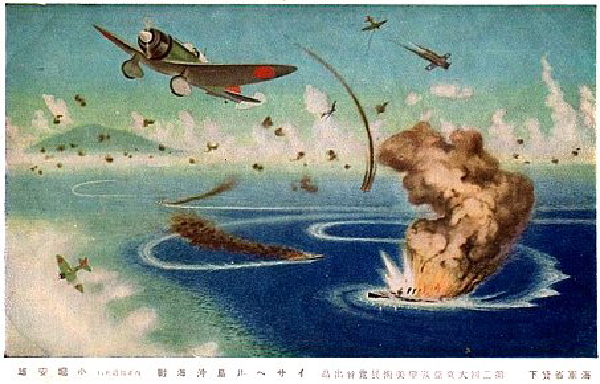
A few years ago, when I was making a BBC TV documentary series about the Japanese and World War II, I mentioned to a colleague that I was leaving for Tokyo in order to meet a kamikaze pilot. “Are you crazy?” he said. “How can you meet a kamikaze pilot? These guys all killed themselves in suicide attacks on Allied ships! They disintegrated into a million pieces 60 years ago!”
He was wrong. Unlikely as it may seem, a number of Japanese kamikaze pilots did survive the war. All had been instructed to return to base if their planes developed a fault on the way to their targets. That is how I came to meet Kenichiro Oonuki. Back in April 1945 he had been forced to land his plane—stuffed with explosives—because of engine trouble while he was en route to attack the American fleet off Okinawa. He was rescued by the Japanese navy and interrogated about the reasons for the failure of his mission. Meanwhile, the war in the Pacific ended.
He told me that his survival had given him “a sense of a burden.” He knew he wasn’t supposed to be talking to me 60 years after the end of the war—that he should have, as my colleague had said, smashed his plane into the superstructure of an American warship. But the fact that he did survive meant that he was able to correct the central myth of the kamikaze—that these young pilots all went to their deaths willingly, enthused by the Samurai spirit.
On the contrary, Oonuki said, when he and his fighter pilot colleagues were first asked to volunteer for this “special attack mission” they thought the whole idea “ridiculous.” But, given the night to think about their decision, the men reconsidered. They feared that if they did not volunteer, their families would be ostracized and their parents told that their son was “a coward, not honorable, shameful.” And then, as fighter pilots, they would be sent to the most dangerous part of the front line where they would still die—but dishonored. As a result, he told me, “everyone put down the answer which was opposite from what we were feeling. Probably it’s unthinkable in the current days of peace. Nobody wanted to, but everybody said, ‘Yes, [I volunteer] with all my heart.’ That was the surrounding atmosphere. We could not resist.”
After a series of practice flights over several months, Oonuki and his comrades prepared to leave for what they thought would be their first—and last—suicide mission. But when it was time for the squadron to depart, Oonuki learned that his plane had a mechanical defect and that he could not leave with the pilots he had trained with. “I went to my colleagues, once their engines had already started and they were on the runway. The azaleas were in full bloom, and so I made a bouquet of azaleas and gave it to my pilot comrades. And one comrade said, ‘I am going ahead of you. I wanted to meet my destiny with you. I’m sorry.’ They were the saddest eyes I ever saw. It’s often said that before one’s death a person has that really sad expression in their eyes, like a deep-sea fish looking up at the blue sky above.” Oonuki left the next day, intending to meet his death with another group of kamikaze pilots, but his plane never reached the American fleet—his life saved by an unreliable engine.
Now he warns that in a time of crisis, like the Second World War, “you are drawn into this major vortex and swirl around without your own will.”
Before I met Kenichiro Oonuki I thought the Japanese kamikaze pilots must have been—literally—deranged. But I emerged, having listened to his calm, measured explanation, thinking something much more terrifying—the kamikaze were quite, quite sane.




